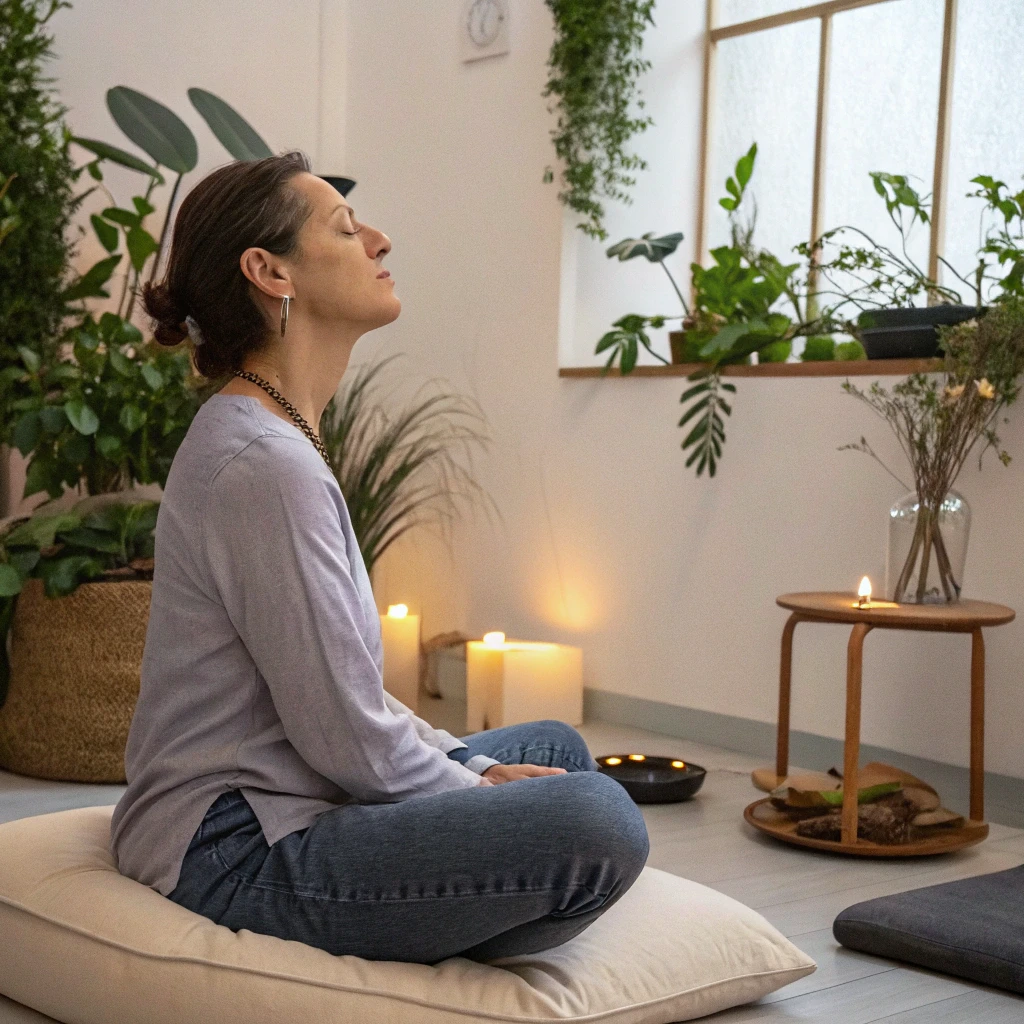
Mindful Breathing Techniques
Explore different breathing exercises to reduce stress, improve focus, and cultivate present-moment awareness.
Table of Contents
Introduction to Mindful Breathing
Mindful breathing is one of the most fundamental and accessible mindfulness practices. It serves as an anchor to the present moment, helping to calm the mind and reduce stress. The breath is always with us, making it a perfect focal point for developing awareness.

When we pay attention to our breath, we naturally shift our awareness away from ruminating thoughts about the past or worries about the future. Instead, we connect with what's happening right now, in this moment. This simple act can have profound effects on our mental and physical wellbeing.
Benefits of Mindful Breathing
- •Reduces stress and anxiety by activating the parasympathetic nervous system
- •Improves focus and concentration by training attention
- •Helps manage difficult emotions by creating space between stimulus and response
- •Lowers blood pressure and heart rate
- •Improves sleep quality when practiced before bedtime
- •Accessible anytime, anywhere, with no special equipment needed
In this guide, we'll explore various breathing techniques from basic to more advanced practices. You'll learn how to use your breath as a tool for cultivating mindfulness, managing stress, and enhancing your overall wellbeing. Remember that these are practices, not performances—approach them with curiosity and kindness toward yourself.
Basic Breathing Techniques
These foundational breathing techniques are perfect for beginners. They're simple to learn and can be practiced anywhere, making them ideal for building a consistent mindfulness practice.

Natural Breath Awareness
The simplest breathing technique involves simply observing your natural breath without trying to change it. This practice helps develop concentration and present-moment awareness.
How to Practice
Counted Breathing
Counting breaths can provide additional structure to help maintain focus, particularly when the mind is especially busy or distracted.
How to Practice
4-7-8 Breathing
This technique, popularized by Dr. Andrew Weil, acts as a natural tranquilizer for the nervous system and can help with anxiety, stress, and sleep difficulties.
How to Practice
Three-Part Breath
This yogic breathing technique (Dirga Pranayama) helps expand lung capacity and bring awareness to the entire breathing process.
How to Practice
Basic Breathing in Practice

Finding a comfortable position is key to establishing a regular breathing practice
Advanced Breathing Practices
Once you're comfortable with the basic techniques, you might want to explore more advanced breathing practices. These can deepen your mindfulness practice and offer additional benefits for specific situations.

Alternate Nostril Breathing
This yogic technique (Nadi Shodhana) is believed to balance the two hemispheres of the brain and calm the nervous system. It's particularly helpful for focusing the mind before meditation.
How to Practice
Box Breathing
Used by Navy SEALs to stay calm in high-stress situations, this technique creates a rhythm of equal counts for inhale, hold, exhale, and hold.
How to Practice
Breath of Fire
This energizing Kundalini yoga technique involves rapid, rhythmic breathing that can increase alertness and energy levels. Not recommended before bedtime.
How to Practice
Coherent Breathing
This technique involves breathing at a rate of about 5-6 breaths per minute, which has been shown to optimize heart rate variability and promote relaxation.
How to Practice
Advanced Breathing in Practice

Advanced techniques like alternate nostril breathing can help balance energy and focus the mind
Breathing for Stress Reduction
One of the most immediate benefits of mindful breathing is stress reduction. When we're stressed, our breathing typically becomes shallow and rapid. By consciously changing our breathing pattern, we can activate the body's relaxation response.

The Science Behind Breathing and Stress
Deep, slow breathing activates the parasympathetic nervous system—our "rest and digest" mode—which counteracts the sympathetic "fight or flight" response triggered by stress. This physiological shift leads to decreased heart rate, lower blood pressure, and reduced levels of stress hormones like cortisol.
Calming Breath for Acute Stress
This technique is particularly helpful during moments of acute stress or anxiety, such as before a presentation or during a difficult conversation.
How to Practice
Progressive Relaxation Breath
This technique combines breathing with progressive muscle relaxation to release physical tension associated with stress.
How to Practice
For chronic stress management, consistency is key. Even just a few minutes of mindful breathing practiced regularly throughout the day can help maintain lower baseline stress levels and build resilience to stressful events.
Stress Reduction in Practice

Taking breathing breaks throughout the day can help manage workplace stress
Incorporating Breathing into Daily Life
The true power of mindful breathing comes when we integrate it into our daily lives. Rather than seeing it as a separate practice that requires special time and space, we can weave breath awareness into our existing routines.

Breathing Anchors
Identify specific moments in your day that can serve as reminders to practice mindful breathing.
Examples
Mindful Minutes
Set aside brief periods throughout the day dedicated to mindful breathing.
How to Practice
S.T.O.P. Practice
This acronym helps you remember to incorporate mindful breathing into stressful moments.
How to Practice
Stop what you're doing.
Take a breath (focus on your breathing for a few moments).
Observe what's happening in your body, mind, and surroundings.
Proceed with awareness.
Remember that consistency matters more than duration. Five minutes of mindful breathing practiced daily will yield more benefits than an hour-long session once a month. Start small, be patient with yourself, and gradually build your capacity for breath awareness throughout your day.
Daily Integration in Practice

Finding moments throughout the day for brief breathing practices builds mindfulness into your routine
Further Resources
To deepen your mindful breathing practice, explore these additional resources:
Books
Breath: The New Science of a Lost Art
by James Nestor
The Breathing Book
by Donna Farhi
Mindful Breathing
by Thich Nhat Hanh
Apps
Calm
Features guided breathing exercises and breath visualization
Breathe+
Customizable breathing patterns with visual guidance
Headspace
Includes specific breathing meditations for different needs
Online Courses
The Science of Breath
by Eddie Stern (Yoga Alliance)
Mindfulness-Based Stress Reduction (MBSR)
Available through many healthcare providers and online platforms
Local Resources
Mindfulness Association UK
Offers courses and workshops throughout the UK
British Mindfulness Institute
Provides training and resources for mindfulness practices
NHS Mindfulness Programs
Many NHS trusts offer mindfulness courses for stress reduction
Remember
The breath is always with you, making it the most accessible tool for mindfulness practice. Start where you are, with what you have, and build your practice gradually. Even a few mindful breaths each day can begin to transform your relationship with stress and enhance your wellbeing.